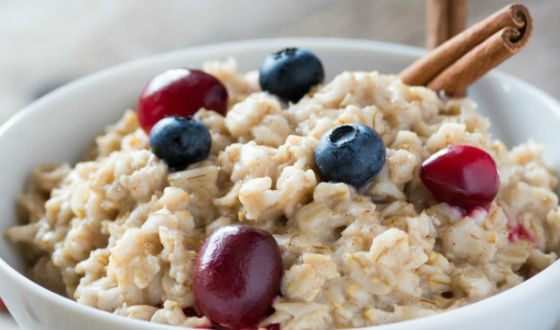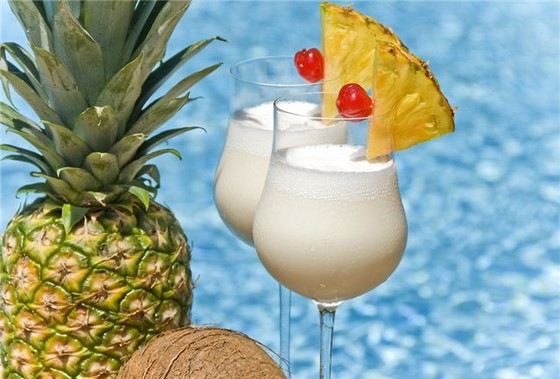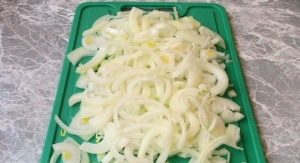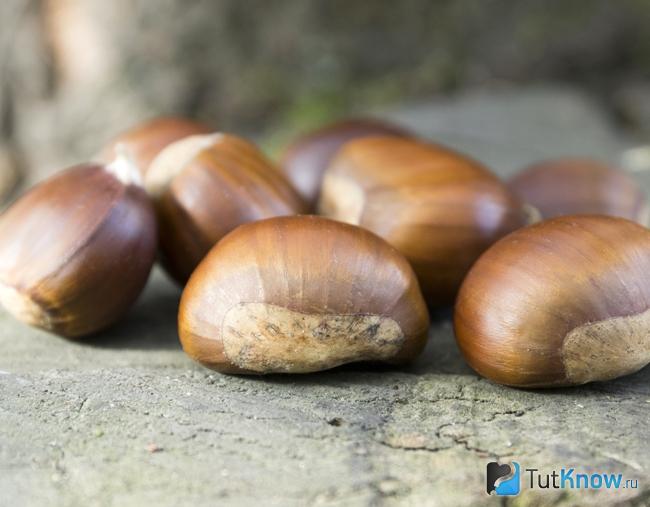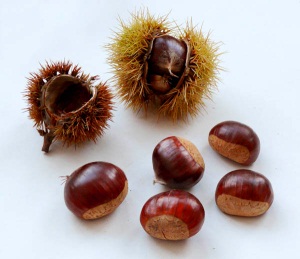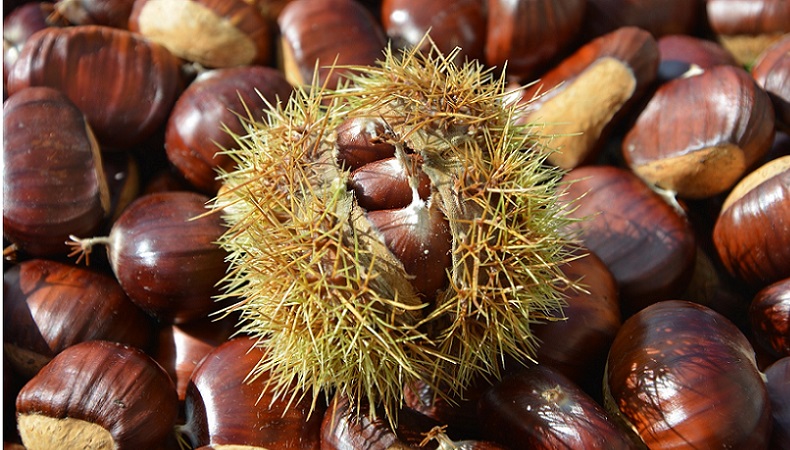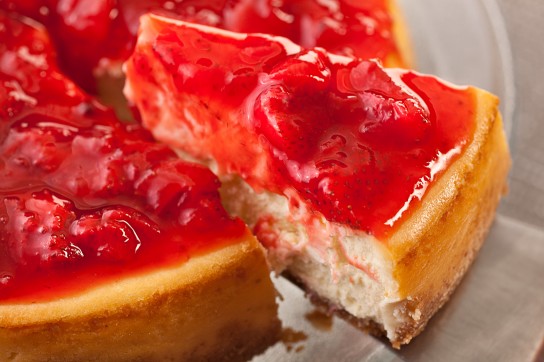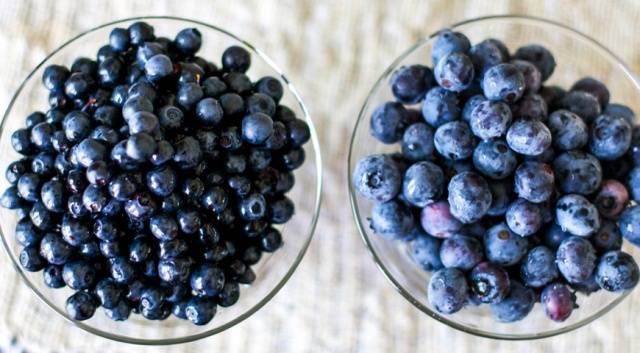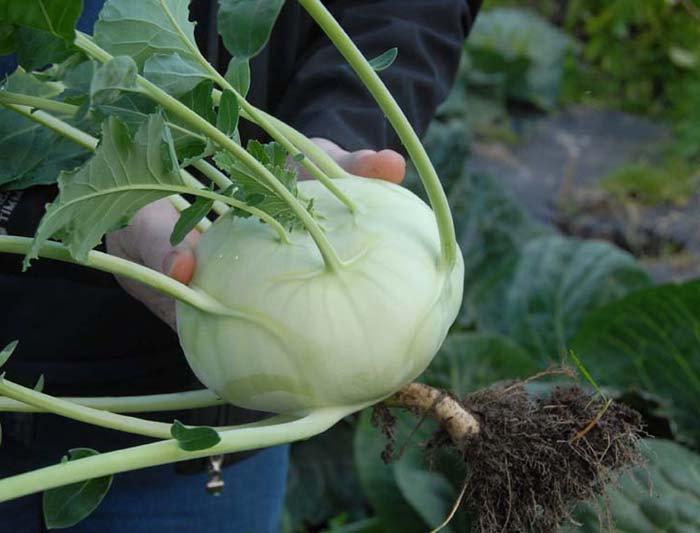What do slender French women eat and the secrets of proper nutrition for children in France. What do the French actually eat
Vincent Vega: Do you know what a quarter-pound cheeseburger is called in Paris?
Jules: What, they don't call him a quarter-pound cheeseburger?
Vincent: They have a metric system there. They generally don’t understand what a quarter pound is.
Jules: And what do they call him?
Vincent: They call him Royal Cheeseburger.
Jules: Royal Cheeseburger? But what then are they calling Big Mac?
Vincent: “Big Mac” is “Big Mac”, only they call it “Le Big Mac”.(Pulp Fiction, directed by Quentin Tarantino)
Breakfast:
The French eat an exceptionally sweet breakfast. Flakes, croissant (a real French croissant - a croissant without filling and butter puff pastry), a puff pastry roll with chocolate, a piece of baguette with nutella, butter, or jam (either one or the other, not both. Though I still believe that butter + jam \u003d success). Croissants and buns are best bought at boulangerie! This is a great pastry. In boulangerie it is better not to go on an empty stomach - the abundance of cakes will not leave you indifferent. They drink coffee, much less often tea, and very often - hot chocolate, which has nothing to do with hot chocolate, which is made in Russia, rich and rich, but rather is what we call cocoa from milk and Nesquik. Drinks are drunk from the bowls, dipping into them everything they eat, whether it is a baguette or a croissant. It looks disgusting. But so really tastier
Lunch (from about 11.30 to 14.00):
Dinner was the biggest surprise for me. For lunch, the French eat ... sandwiches. More precisely, one long sandwich, consisting of half a baguette, cut in the middle, with butter and ham inside - canonical jambon-beurre (ham-butter). There are, of course, a lot of variations on the theme - with cheese, salami, gherkins, chicken, etc. Here's a sandwich, dessert, drink - together cost from 7-10 euros. Of course, on Sunday, mom or dad can cook quiche or pizza, but this happens very rarely.

Afternoon snack (16: 00-17: 00):
At this time, the children return home from school and are immediately flushed with biscuits and juices. Because…
Dinner will be only at 19.30-21.00:
Late, of course. There are various combinations of dishes. For example, dinner consists of 3 dishes: entrée (sandwiches with pate, and sometimes on New Year's Eve and foie gras :), plât (actually the dish + salad salad) and dessert.
For dessert, often "served" ... yogurt. Yes, yes, if you didn’t know, yogurt is a dessert, and it turns out to be harmful in the morning, as the Russians do all their conscious life!
Here is what plat was:
Quiche Lorraine is a great classic of French cuisine. How could I explain it with his words? Open bacon omelette cake? Omelet with bacon in the dough? In general, see photo number 2. The main thing is that cooking is immensely facilitated in all respects: the dough is bought ready-made, round, bacon - chopped, grated cheese. Unless you have to mix eggs with cream yourself.

Gatelttes de sarrasin - this dish is usually eaten only in winter, because, according to the French, it is quite fatty. So, this is a pancake made of dark (buckwheat) flour, in which grated cheese, a slice of ham (thin as paper) and ordinary fried eggs are wrapped. For Russians, this is more like a standard breakfast.

Cassoulet is another winter dish. Beans with sausages and slices of duck. It is often bought ready-made in a huge tin can.

Also for dinner, sometimes there are: pumpkin puree soup, meat and green beans, chicken breast and green beans, meatballs (prepared and frozen) and green beans. Sometimes there were pasta instead of beans. And always a little bite with a salad of lettuce. Speaking of salad dressing, here is her recipe: 2 tablespoons of olive oil, 1 tbsp. balsamic vinegar, 1 teaspoon of mustard, salt, pepper, all mixed until smooth. Done!
For dessert, as already mentioned, there has always been yogurt.
In restaurants you can find all the same, plus french fries, raw minced meat with raw eggs, burgers, oysters, pizza.
If you take meat you must specify how well it should be fried (bleu / raw-saignant / with blood - à point / semi-fried - bien cuit / well-fried). Nobody takes the latter, for it is considered too harsh. Well, standard desserts: a cheese plate, tiramisu, a chocolate cake with a liquid center and an open apple pie, which is prepared like this: put apples cut into thin dough, put it in the oven for 20 minutes - it's done!

(Visited 2,258 times, 1 visits today)
Consumption ecology. Life: In France, children do not have the right to open the refrigerator and take whatever they want from there ...
The French do not snack. And their children too.
According to the recollections of grandmothers, in our villages, too, did not have a snack. “Squeezing food,” “nibbling” was considered unacceptable and severely punished. You can often hear: “don’t eat it, you will ruin your appetite!”, “You need to whet your appetite”, “eat only at the table. All this is a reflection of traditional folk culture, for which snacks were unacceptable. I note that there were no refrigerators, and bars with hot dogs were not sold.
A similar tradition has been preserved in many countries. Unfortunately, in Belarus such a tradition is destroyed and there is an aggressive imposition of “healthy snacks”. For an ordinary person, there is no “healthy snack”, it is as absurd as a “healthy drug". A rare exception can be made for athletes, but not about that now.
According to statistics, 72% of women snack on chips during the working day with chips, crackers, sweets, often explaining that these goodies are the only thing that brightens up their working hours. Many office workers are forced to have a bite to eat right at the desk, since they cannot afford a full meal due to heavy workload and a large amount of work.
In the States in the 50s of the twentieth century, “people had breakfast, lunch and dinner. They ate at home, the whole family at one table ... Snacks were the prerogative of children and adolescents - an additional opportunity to feed a growing body. This wasn’t accepted by adults, ”says Meredith Lewis, a nutritionist from Orlando. But snacks gradually became the norm, and, as statistics show, this happened in the same 1980s and 1990s. Even worse, the calories obtained during a snack, as a rule, are not compensated by a decrease in the calorie content of the main meals: we do not consider it necessary to reduce portions at lunch or dinner due to chewing all day.
In many respects, this norm is formed by the food industry, the purpose of which is to sell more food. With three meals a day, you can’t sell much, so marketing has focused on eroding traditional food and increasing the number of times.
Aggressive introduction: "Do not slow down - sneak", "you are not you when you are hungry." The introduction of new behavioral habits: popcorn during the movie, chips with friends, etc. The inclusion of "liquid calories" - soda. Yes, these are also calories and also a snack!
Outside America, cultural norms tended to reduce the risk of conditioned reflex overeating. Snacks are condemned in the traditional culture of countries such as Japan, Turkey, France.
Countless publications based on research and pure theorizing have tried to explain the so-called French paradox that the French are less likely to suffer from cardiovascular disease and obesity than Americans, although they consume more fats. According to one theory, the thing is that in France they cook on healthy olive oil. On the other - a secret in red wine. The third claims that the French are healthier because they have less stress than Americans, the fourth explains this phenomenon by genetic differences in metabolism. The answer is simpler: the peculiarity of food in France is that the French do not snack.
Note that according to the latest statistics, French women are recognized as the worst Europeans. According to the sociologists who conducted the study, they can be classified as an exclusive category. The index of body mass index of French women, the ratio between weight and height, is recognized as the lowest in Europe. It is 23.5, while the proportion among residents of Ireland is 24.5.
Another nutrition factor in France that protects the French from obesity is the historically established tradition of eating two or three times a day, with family or friends, without snacking in between. For a long time, French restaurants even served customers only at the time that was considered traditional for lunch and dinner.
In France, we still maintain a very strict nutritional structure, ”France Bellill, who studies obesity at the Paris hotel Dieu clinic, told me.
Do your cultural traditions prevent snacks between meals? - I specified.
Yes exactly. From childhood, the French know that this cannot be done. It is not right. Bellillus often tells his students: “Well, didn’t anyone bring anything edible to the audience?” If we were in America, you would probably come with coffee, donuts and chocolate bars. ”
Not that in France. “No one would have thought of bringing food to the audience,” she adds. “They never did that, and they are not attracted to such an idea.” In our environment, nothing provokes the wrong food at the wrong time. ”
Alas, the norms of behavior and nutrition in France, which provided protection against overeating, requiring us to eat only at certain times of the day, are blurring outside of America.
Even in France, snacks, fast food restaurants and other temptations already appear. As the concept of the accessibility of delicious food is exported from overseas, it becomes obvious that conditioned-reflex overeating does not take into account state borders.
Jean-Pierre Poulin, head of the Center for the Study of the Hospitality Industry at the University of Toulouse (Le Mireille), sees signs of a gradual cultural drift from structured nutrition to what he calls stray food. He believes this movement is the destructuring of French food traditions. Although stray eaters still have lunch and dinner with family or friends, they do not miss the chance to eat alone several times during the day. Frans Bellil noticed the same trend. “Food-related signals are becoming more numerous and more aggressive,” she says. As a result, obesity is beginning to threaten the French, and this is especially noticeable in children.
Note that the classic French parenting in the field of nutrition in France does not allow them to bite:
1. In France, children do not have the right to open the refrigerator and take whatever they want from there.They must ask their parents for permission. This not only prevents children from “biting”, but also helps to maintain order in the house.
2. In France, it is not the children who decide what will happen for lunch or dinner.No one offers a choice of dishes. All family members eat the same thing. Trying this method is safer at home. If the child is not eating something or has barely touched, react calmly. Do not offer another meal in return. Suppose a child is just beginning to get out of his childhood nutritional restrictions. Make life easier for him - prepare dishes that all family members like, and then gradually introduce new ones into the diet.
3. Perhaps the main principle of the French approach to baby food is that the child should try at least a piece of what lies on the plate. I am sure that not all French families consider this rule sacred, but I have not seen such a rule.
Try to imagine a “taste rule” as a law of nature — the same gravity. Explain that our tastes are shaped by what we eat. If the child is nervous and does not want to try something for the first time, invite him to at least smell a piece (maybe he will take a bite). Offer only one new product each time. Together with him, serve the dish that the child likes.
Watch this process, but don't be like a jailer. Keep calm, and even better - turn everything into a game. After the child has finally swallowed the treasured piece, praise him. React neutral if he doesn’t like it. Never offer another meal in return. Do not forget that your game is designed for the long term. You don’t want the baby to eat the artichoke once in a lifetime, and then under pressure. Your goal is to gradually teach him to love artichokes.
4. Even if some product is unsuccessful for your child, do not give up and after a while offer it again. Add broccoli to the soup, serve with melted cheese or fry in oil. Perhaps broccoli will never be your child’s favorite dish, but each new shade of taste increases its chances of becoming a familiar product. And then you will safely include broccoli in the family menu. Of course, a child does not have to love all foods. But at least you will give a chance to each of them.
5. The French talk a lot about food.This is part of the food culture in France. These conversations help them instill in their children the idea that food is not only the source of vital activity of the body. Food is an interesting taste experience.French childcare manuals offer not to limit the conversation about food with children to just “like it, don't like it”, and advise asking questions: “Are these apples sour or sweet?”, “How does the taste of mackerel differ from the taste of salmon?”, “What is tastier : red leaf lettuce or arugula? ”.
Think of food as an invitation to talk. If the cake suddenly fell apart or the roast turned out to be inedible, laugh at it together. In the supermarket, walk along the grocery rows with the child, invite him to choose fruits and vegetables.
No national cuisine can surpass French cuisine in originality and sophistication. What is eaten in France is different from that of other countries. Cooking for the French is an art. Each dish is prepared according to its own recipe, adding its own zest even to well-known recipes.
French cuisine
The French brought real luxury to everyday cuisine. Sweet towers stand tall towers. Meat, oysters, fish are placed on pedestals. Compared to other European countries, French chefs use less dairy products. The exception is French cheeses. More than three thousand sauces are used in French dishes. All French dishes are prepared exclusively from fresh products, the quality of the products is preserved after heat treatment. The cuisine of France is multifaceted, in different areas of the country there may be disagreement regarding the recipes of some dishes. However, regardless of the area, French cuisine is replete with vegetables and root vegetables.
About Provence Cuisine
Indispensable in Provencal cuisine are vegetables, garlic, seasonings: tarragon, marjoram, oregano, basil, dill, parsley, rosemary. Vegetables are used in hot and cold dishes. Vegetable dishes are prepared very hearty, so sometimes they replace the main ones.
Cod, pike, halibut, carp, sardines adorn most Provence dishes. Especially popular in France is fish soup bouillabaisse with small varieties of fish, seafood, vegetables, wine, spices. Demand is mussels, oysters.
Meat in Provence is reserved. There are several dishes: beef stew, lamb stew, milk pig, Parma ham, which are on the tables of the French.
Dessert in Provence is in great demand. On the table there is always chocolate, nuts, nougat, dried fruits, cookies. One of the favorite pies is klafuti with apple-cherry-apricot filling. In any pastry shop there are always cakes, rolls, cakes, marmalade, sweets, creme brulee.
About Burgundy Cuisine
Burgundy cuisine uses wine in many dishes. Wine is added to sauces, gravy. The wine pickles meat, snails. Snails are served without shells, adding parsley and onions.
About Normandy Cuisine
Dairy products are valued in Normandy: cream, butter, Camembert. In Normandy, meat and fish are always cooked with cream. And dishes such as Norman beef side with cream and mushrooms and Rouen duck can be cooked so deliciously only in Normandy.
About Lorraine Cuisine
Lorraine is famous for open pies with slices of smoked bacon or ham with melted cheese. The national dish is Alsatian stewed cabbage with pork and smoked breast.
About Lyon's Kitchen
Lyon cuisine is famous for its unusually delicious Lyon-style gratine onion soup. A traditional Christmas dish is fried capon with chestnuts. Capons (young males) are grown in cages, which makes their meat juicy, incomparable in taste.
Dishes of France
Every dish made in France can be remembered for a lifetime. The most famous dish prepared by French chefs is frog legs. France is also famous for its cheeses, they are produced by more than 500 different varieties: hard, soft, young, seasoned, with a crust, with mold. Also known are the “Burgundy snail”, “cocotte” eggs with extragon. National dishes such as ratatouille, julienne, baguette, croissants are known not only in France. Often they are on the tables of Russians.
Wine is the French national drink, the most famous being Bordeaux and Burgundy. Wine is served in almost every dish, and sometimes it is included in the price of set meals. French champagne, cognac, calvados are no less famous in the world.
This topic has not only matured on my blog, but also managed to overripe. Joke.
The French and the food ... it's like the Russians and the cap with ear flaps, the Americans and Al Qaeda, the Germans and the war. In short, these two are one, closely intertwined and practically inseparable from each other. This is part and style of French life, their reality, their reality, their habits, their everyday life.
And I will try to uncover the theme of French gastronomic everyday life and give my dear readers the answer to the question “What do the French eat?”
(About what the French DO NOT eat - I wrote)
Breakfast, Dinner, Lunch ...
What does the day for most of us begin with? Of course with breakfast. I already wrote about the French breakfast but and therefore I will not repeat myself. I only note that if the Frenchman does not have time to have breakfast at home, he does it in the buffet at the enterprise, in a cafe or bistro. Often quickly, on the run.
DinnerAs a rule, the French also celebrate at home, or less often, as an exception, in a restaurant or bistro. It usually consists of something light vegetable for the first, and in the cold season it is often hot soups, a small main dish and dessert or cheese to finish. In the evening, the French try not to overload themselves.
Dinner. This is already serious. Although this topic is also on my blog, today I will dwell on some typical or even template details.
French Lunch Ingredients
So, if a typical French lunch consists of several parts (main course, main course, dessert), then many allow themselves to step back from the classics and order one thing at once - either a salad, or a dish, or a sandwich.
But what about the soup? Although the soup loses its position, it is still popular in France as an input dish ("in the first" in our opinion).
Typical french soups?
Well, well, you know not? Well, did you hear that? Well, as stereotypical as frog legs! Yes, bravo, you guessed right - onion soup (soupe d’oignon). He is still in the lead. The company makes him a soup of white cabbage. Not to be confused with cabbage soup, although very similar).
Onion soup - aka folk soup
Other popular French soups are mashed or potage de légumes. And among the most popular - from leek, just vegetable, Parmantier (leek + potatoes), Saint-Germain (aka from young peas).
Often you can buy such a miracle in a package for juice in a supermarket and just reheat in the microwave. But this is horror and harm.
Recently, the French stomachs began to conquer the cold Spanish gazpacho soup. Although, why don't we try to promote okroshka on their market? Oh yes, you won’t pack it in a bottle or bag, and the shelf life again ...
________________________
Traditional french meal
We touch on such topics as a French lunch at home, on a day off, or even with inviting guests. What does it look like?
✔ An aperitif is served first

Most often it is either strong wine / vermouth (martini, chinzano, porto, banyuls), or pastis, or whiskey, or a glass of champagne, or kir (white wine with red syrup to taste). What about the children? Children juice.
The so-called “des amuse-gueule” is served from the meal to the aperitif, which in a direct translation means, forgive me, “fall-to please”. And most often the French are delighted with canapes, salty cookies and crackers, fried salted nuts and peanuts, olives.

Gastronomic Canapes
✔ After the joys for the mouth there is an entrance dish, it’s also Antre
Here are the options:
♦ Des crudités, or fresh vegetables
- grated carrots \\ grated celery root with dressing
- tomato salad
- green salad (different types of greens or mixes)
- beetroot salad
- Nisuas salad (tomatoes, boiled eggs, green beans, olives, tuna, lettuce)
- eggs with mayonnaise
- artichokes with vinaigrette sauce

Salad de creudite
♦ Râté paté (paste in all its forms and variety)

french pate - classic serving with gherkins
♦ De la charcuterie, pronounced sharkutri, served with gherkins
- jambon \\ jamon
- sausages
- cervelat, smoked sausage, dry-cured sausage, etc.

Jerky sausages with herbs and spices
♦ Une tarte or open cakes
- aux poireaux / aux oignons with leek / onion
- une quiche lorraine / quiche loren, add jambon and cheese
- as well as tart according to an individual housewife recipe

French quiche - simple and quick to prepare
♦ Breton pancakes, they are crępe bretonne

Breton pancake - buckwheat, served with an egg
♦ Burgundy snails, they are also des escargots bourguignons

Famous Burgundy snails - carefully, they are with garlic
♦ Seafood, depending on the generosity of the owners - the number of ingredients varies
Of the desserts unusual for the Russian eye and taste, Ile Flotan (raw beaten egg yolks), yogurt with sugar or jam, and chocolate mousse can be noted.
__________________________
That's about it, and from such components, the French gastronomic everyday life is formed, which I tried to disclose in this short article.
If my readers have questions, additions, recommendations or just comments regarding French food, then express yourself, please do not keep in yourself!
The simple answer to the question “What do the French eat?” Is that they eat almost everything. In France, as in most developed countries, there are meat lovers and vegetarians, there are people who prefer salted and those who like sweets most of all. However, there are a number of aspects related to traditions of french cuisinethat distinguish France from all other countries.
The history of food in France
Food is a very important part of the French, which makes it a huge part of the whole French culture. While the British are known for their afternoon tea, and the Americans are famous for their love of fast food, the French are distinguished by long multi-course dinners. This food culture is an integral part of the dynamics of everyday life in France.
The fast-paced pace of life in the 21st century has made changes in french lifestyle. For example, huge supermarkets, which are not much different from large American chains, came to France only in the last 20 years. While France was once the epitome of multi-point shopping (bread - in boulangeriemeat inboucheriecheese - infromagerieand fruits and vegetables in local markets), more and more French are planning their diet, visiting weekly hypermarché s.
Despite this trend, the French still very often buy the most important products (bread and pastries) in independent and specialized stores. While meat for everyday meals is usually purchased at the supermarket, many families still visit butcher shops to buy the best pieces of meat for special occasions. In addition, many French people run to the bakery daily for freshly baked baguette or village bread ( pain de champagne).
What do the French like to eat
Although the meal process in France usually takes a very long time, breakfast can be quite quick. Lunch and dinner may seem like a long meal with an abundance of various dishes, while breakfast is similar to what residents of other countries are used to: cereal with milk or coffee with toast.

French breakfast
As a rule, the French get to the coffee pot earlier than to the plate with breakfast. While the traditional morning drink in France is considered to be strong espresso by default (if you ask for coffee in a restaurant, you will certainly get espresso), it is recommended to ask for breakfast café au lait. This coffee is served in a large round mug and contains a lot of warm milk. Less popular options are tea or hot chocolate.
Typically, the first cup of coffee with the French is accompanied by:
- A piece of baguette with butter or jam. This is usually enough for a traditional French breakfast.
– Tartines – favorite food of the french - toasts with jam or jam, which, thanks to the sweet taste, go well with strong coffee.
– Layered, warm croissants are a popular breakfast product traditionally designed for the weekend. On weekdays, they are also part of the breakfast, but much less often. While in France, don’t even think about eating croissants without preheating them.
– Pain au chocolat - Luxuriously delicious morning pastries. On weekends, the rectangular version filled with chocolate is a real treat for children.
- Sometimes bread / toast / croissants are accompanied by a small amount of fresh fruit or plain yogurt.

French lunch
To the question " What do the French like to eat for lunch? ”you will find the largest number of options. Some French interrupt the workflow for a couple of hours for a delicious dinner, accompanied by a vocal of wine. But not everyone can afford such a luxury, and not always. For example, the frenzied rhythm of modern life makes employees of business centers in megacities on the run to intercept sandwiches bought from street vendors.
Restaurant lunch: This option is limited only by imagination and budget. Three or four dishes can include appetizers (salad, soup or pate), meat or fish, accompanied by potatoes and warm vegetables. All this is crowned with a dessert and sometimes a cheese plate. As a rule, such a dinner is accompanied by gourmet wine of France. Of course, there are restaurants offering lighter lunches with popular menu items.

- Oysters lying on ice in the halves of shells. The class of oysters is very important, for example, the quality of oysters Spé ciale de Claire an order of magnitude higher thanFine de Claire, wherein Spé ciale Pousse en Claire - Top grade, better than all the rest combined.
– Salade Niç oise appears in the menu of many cafes. Named after the famous city on the French Riviera, this salad consists of tuna and hard-boiled eggs, potatoes, tomatoes, olives, capers, green beans and sometimes anchovies.

– Soupe à l‘ Oignon Gratiné e Nowhere in the world can it be so tasty as in France. Fragrant and perfected with caramelized onions, topped with Swiss cheese crisp gruyere, French onion soup is a real classic.
– Charcuterie - A set of hand-made sausages, air-dried, dried ham and paste. Expect Dijon mustard, gherkins and small pickled onions along with baguette and cheese to make the company’s cold cuts. Add a bottle of red wine of France… et voilà , you have a French picnic, which can be arranged right on the bench in the nearest park.
- Various restaurants and street vendors sell traditional French crepes (crê pes) , which can be either sweet or savory, as a main course or as a dessert.
– Croque Monsieur - not a very distant relative of the American grilled cheese sandwich. This is an open sandwich with toasted ham and cheese, topped with velvet bechamel sauce. Its variation is Croque Madame, involves adding a fried egg on top.
- Do not forget French fries!
Home lunch: Some French people are used to having dinner at home, and do not want to break this tradition, even though they are not waiting for the same bizarre and sophisticated multi-course meal at home as in a restaurant. This practice is more common in rural areas, especially during physical work in the open air, where lunch allows you to escape from the midday sun.

Street lunch: as the work schedule gets more and more busy, many French people began to buy sandwiches on the street or at train stations. The most popular sandwiches, those that the French love to eat, consist of baguette, and the most traditional filling is cheese or ham. Also now boiled eggs, tuna and salami can be found as filling.
French dinner
Dinner in France varies depending on the day of the week, time of the year, and how hearty the dinner was. Couples who dine at home often have a rather ascetic dinner, while those who just have a sandwich for lunch can afford a varied and rich dinner.
Since France is large enough to reduce its climates and geography to a single denominator, it is logical that the main food is different in the north and in the south, along the sultry Mediterranean coast and in the cold Alps. So, on weekends or holidays, the whole family gathers for dinner, sometimes in extended format, then the meal becomes longer, more dishes are prepared, and the dining table is decorated with beautiful tablecloths, cutlery, napkins and plates. When dinner is ready and the head of the family says “ à table", Everyone goes to the table and takes their places.
Tip: If you are not a fan of steak or fish, try them in France, you may change your mind. Seductive, skilled sauces are not far from perfect.
- For the famous bistro-steak steak au frites, entrecote (ribeye) is grilled or in a pan (a couple of minutes on each side) and served immediately with a generous piece of cheese Roquefort or with fragrant sauce bé arnaisewith which a piece of meat is poured. A mountain of crispy fries is a must, plus a simple green salad.
- Fresh fish bought on the day of preparation at the local market, lightly grilled and served with potatoes and salad, is another popular option for a French dinner.
- Fried Norman clams can be served with shallots and thyme in white wine sauce, where you can then dip the slices of toasted baguette.
– Bouillabaisse, invented on the Mediterranean coast of Marseille, is a classic French fish soup. This is one of the key characters. french cuisine.
– Blanquette de veau, soft veal stewed in white sauce,is the main homemade food and one of the most popular dishes in France. Sometimes the dish can vary, and the veal is replaced with lamb meat.
- Simmering chicken, burgundy wine, mushrooms, onions and slices of bacon combine to create a legendary dish coq au vin, the centuries-old “highlight of the program” of French gastronomy.
– Boeuf Bourguignonsister dish forcoq au vinalso came from Burgundy. Basically the same method is used here, but beef is used instead of chicken.
– Cassoulet, a divine dish in a pot, spread throughout the world from the south-west of France. A rich, slowly languishing roast is a recipe built around meat (pork sausages, pork, goose or duck) and white beans.
Enjoy the unique traditions of french cuisine
Although there is no specific diet common to all French people, many homes and restaurants have a selection of typical foods and traditional dishes. Coffee and wine of France also closely related to food culture. Travelers and visitors alike will appreciate great food as well as simple and fresh ingredients.



